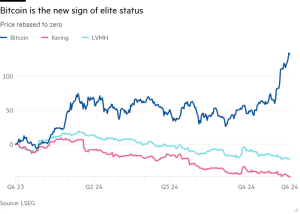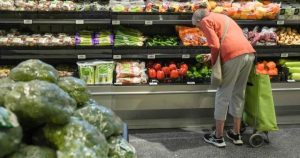ANALYSIS: Trudeau, in quick trip to Asia, to focus on trade, security – National

When Prime Minister Justin Trudeau lands in Laos on Wednesday, he will have spent almost a full day in the air and yet, despite spending 24 hours to get to the Laotian capital of Vientiane, he won’t even spend 48 hours there.
But senior government officials travelling with the PM this week say the time and treasure spent so that Trudeau can attend the annual summit of leaders from the Association of South East Asian Nations (ASEAN) is an important part of a “strategic long-term bet” his government made several years ago to raise Canada’s profile in the region.
It’s part of the country’s Indo-Pacific strategy aimed at boosting rules-based trade and enhancing the kind of multilateral security relationships that a middle power like Canada must have to survive and thrive.
“Canada has to be building relationships both diplomatically and economically and also in the security area. And that’s what Canada has been doing through its Indo-Pacific strategy,” said Roland Paris, an international affairs professor at the University of Ottawa who briefly served as an adviser in Trudeau’s office after the 2015 election.
In a briefing given to reporters on Trudeau’s air force plane, senior government officials conceded that, for many years, Canada was not seen as a reliable partner in Asia, that its interest in its Pacific neighbours would wax and wane.
Canada may still have a ways to go improve its reputation in Asia but the bet is that having the Canadian prime minister — a G7 leader — travel to the other side of the world for face-to-face meetings with leaders from the likes of Cambodia, the Philippines, Malaysia, Singapore and other ASEAN members is the clearest way of showing Canada’s commitment to a region which just happens have the fastest-growing regional economy in the world. Government officials were also quick to point out that Canada-ASEAN trade has doubled since the Liberals took office 2015.
“This is one of the fastest-growing economic areas in the world. And if Canada wants to benefit from that through trade, we need to be building relationships,” Paris said. “The prime minister’s presence is a very concrete way of doing that.”

Get breaking National news
For news impacting Canada and around the world, sign up for breaking news alerts delivered directly to you when they happen.
Trudeau will become the first-ever Canadian prime minister to visit Laos, a relatively poor landlocked nation between Vietnam and Thailand. And he will be the first Canadian prime minister to attend three ASEAN summits in a row.
“It’s really important we have those conversations directly in the region,” said one of the government officials who spoke to reporters on condition that they would not be identified. The official went on to use that most Canadian of metaphors — that when it comes to foreign policy, Canada “has to go where the puck is going.”
That said, government officials caution that Trudeau’s time in Laos is unlikely to yield groundbreaking trade treaties or blockbuster trade deals. His work, officials said, sets the stage for for future deals.
Canada can no longer just “operate on a set of relationships with Europe or the Americans,” one official said.
That idea is not unique to the Trudeau government. The Harper government, too, tried to diversify Canada’s foreign policy focus. It focused, with mixed results, on “hemispheric” relationships with South and Latin America.
Canadian prime ministers will use what is typically a busy fall season for international meetings of leaders, and Trudeau’s fall this year is at least as busy as any other year he’s had as he tries to expand or strengthen Canada’s set of global relationships.
The “summit season” typically starts at the United Nations “leaders’ week” in late September every year and that’s where Trudeau started his fall travel.
Then, last week, he flew to Paris for the summit of La Francophonie leaders. He’s in Vientiane until Friday at ASEAN. Then he continues to fly west to Germany where, at the American air force base at Ramstein, he will participate in a Saturday afternoon meeting of the so-called Ukraine Contact Group, a group of 50-odd countries set up to coordinate military help for Ukraine as it tries to dislodge its Russian invader.
U.S. President Joe Biden and Ukraine President Volodmyr Zelenskyy will also be at the meeting where Ukraine and its allies are expected to address some of the practical issues the country has in prosecuting its war, issues like finding enough ammunition and weapons.
Still to go on the fall summit circuit: The Commonwealth Heads of Government summit on the Pacific island nation of Samoa; the Asia Pacific Economies Conference (APEC) in Lima, Peru; and the G20 summit in Rio de Janeiro, Brazil. While Trudeau’s attendance at those last three summits has not yet been confirmed, a Canadian prime minister tends to miss those gatherings only if a federal election gets in the way.
And while Trudeau can expect the usual barbs in question period from his Conservative opponents about “jet-setting” around the world — and this week he and his officials will literally circumnavigate the globe in an RCAF Airbus A330 jet — the PM’s travels are an important way for a middle power to promote its commitment to multilateralism.
That commitment may be more important than ever if Donald Trump wins the American presidency next month. Trump has threatened to jack up tariffs on Canadian and all other imports that enter the U.S. and may go so far as to end American membership in NATO.
“The world is much more dangerous than it was 10 years ago,” Paris said. “It’s much more complicated. We’re seeing a lot more competition in many different areas. And, you know, it’s really a world in which Canada has to be thinking about its national interests very carefully.
David Akin is the chief political correspondent for Global News.
© 2024 Global News, a division of Corus Entertainment Inc.
#ANALYSIS #Trudeau #quick #trip #Asia #focus #trade #security #National








